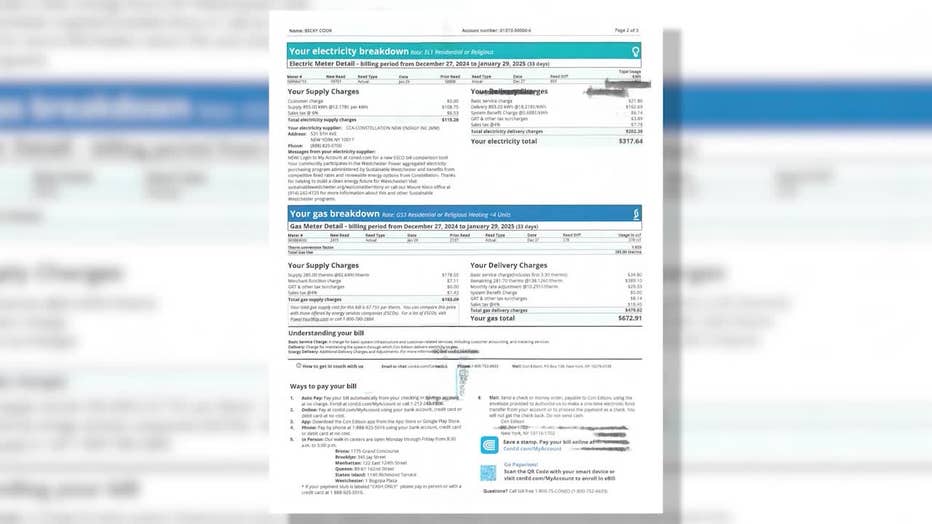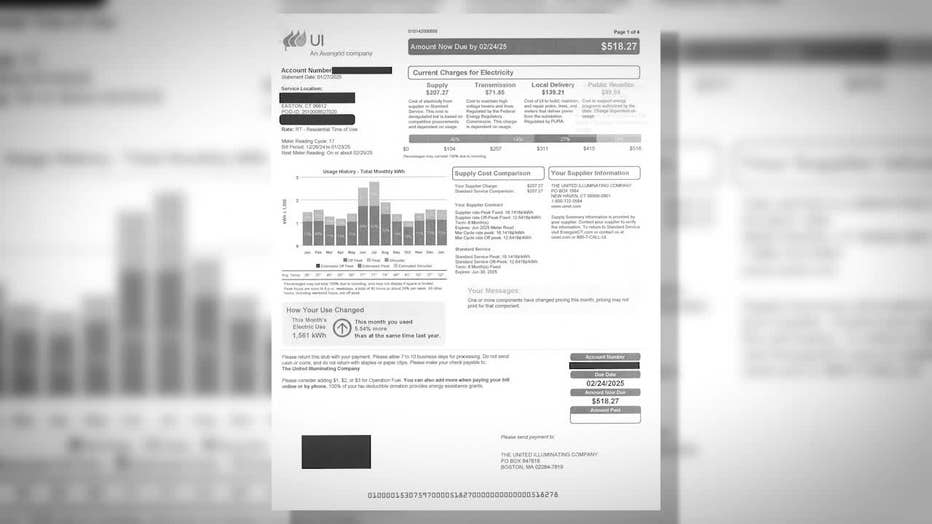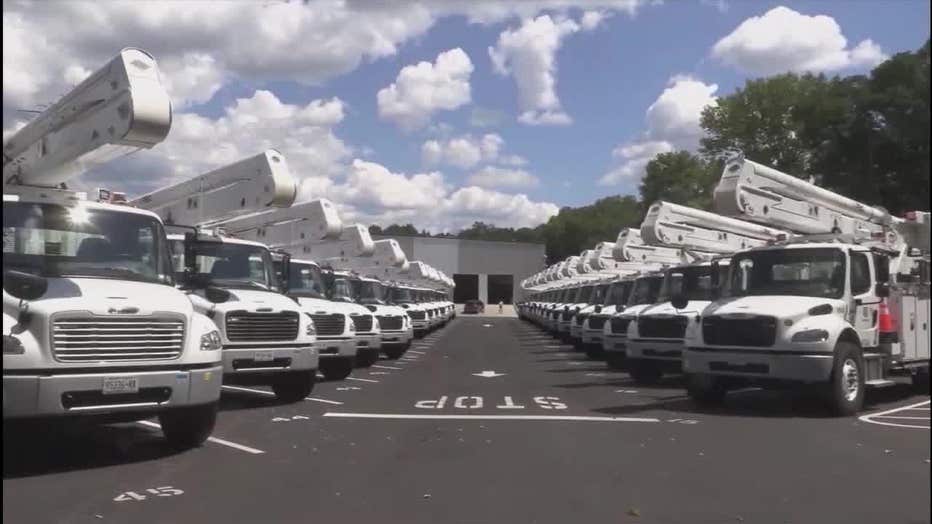Delivery charges? Breaking down your energy bill as Con Ed, JCP&L propose rate hikes
Understanding your electricity bill
Have you ever taken a close look at your utility bill to see exactly what you're paying for? Because it's not just your own usage, you also have to pay what's known as a delivery fee. FOX 5 NY's Antwan Lewis explains what this is and who decides how much companies can charge for it.
Have you ever taken a close look at your energy bill to see exactly what it is you're paying for? It's not just your own usage, or your "supply charge" – you also have to pay what's known as a "delivery charge."
Here's a look at what you should understand about your utility bills and how these charges could impact proposed rate hikes for New York City area customers.
Charges on your electric bill, explained
Dig deeper:
A FOX 5 NY employee from Westchester, New York, shared her family's January Con Edison bill, which included supply charges of $115, but delivery charges of over $200 – nearly $100 more.

"So there are two charges on your electric bill," Jersey Central Power & Light spokesperson Chris Hoenig told FOX 5 NY. "One is for the supply of electricity. That is the electricity itself that you use. The other is the delivery charge. That is what JCP&L is responsible for. [Energy companies] are responsible for delivering the electricity to your house."
Con Edison’s website defines delivery charges as the cost to "maintain and upgrade our electric and gas distribution systems and keep service safe and reliable."
The rate to do so is set by state regulatory agencies and, with many taking closer looks at their bills, some may have noticed charges unfamiliar to them.

Another FOX 5 NY employee from Connecticut shared his family's electric bill, which lists a public benefits charge of almost $100.
United Illuminating, the utility supplier in Connecticut, defines the public benefits charge as one that supports energy programs authorized by the state. On the UI website, further explanation identifies costs associated with "various assistance programs and outstanding balances."
Why are charges increasing?
What we know:
JCP&L is alerting customers to expect a nearly 20% increase in their electric bill beginning June 1. Con Edison is also proposing double-digit rate hikes that could go into effect next year.
Con Ed's double-digit rate hike: NYers fight back
Con Edison is proposing double-digit rate hikes that could go into effect next year, but Gov. Kathy Hochul has asked the state to reject this proposal, citing an affordability crisis. FOX 5 NY's Michelle Ross explains.
According to experts, market conditions, including lower supply and higher demand, are driving up the cost for energy suppliers, which means many customers are noticing their bills going up.
Hoenig said the JCP&L increase is tied to its supply charge.
"What is happening right now in New Jersey and in states around New Jersey, as we are an importer of electricity, is what is leading to these rate increases," Hoenig said.
How much could charges increase by?
What's next:
Even with all the charges already in place in New York, Con Edison is proposing rate hikes that could see some bills increase by more than 11% for electric use and 13% for gas.
The state legislature is considering the NY HEAT Act, which stands for New York Home Energy Affordable Transition. This would cap the cost of energy for low-to-middle income families. It is yet to pass the full assembly.

Meanwhile, the New Jersey Board of Public Utilities said Garden State residents could see increases from 17 to 20% if proposed rate hikes are approved.
FOX 5 NY reached out to all the utility companies mentioned above. JCP&L and PSE&G were the only ones to respond.
What you can do:
Concerned customers are encouraged to reach out to their electric companies about bill assistance programs, which most utility companies do offer.

